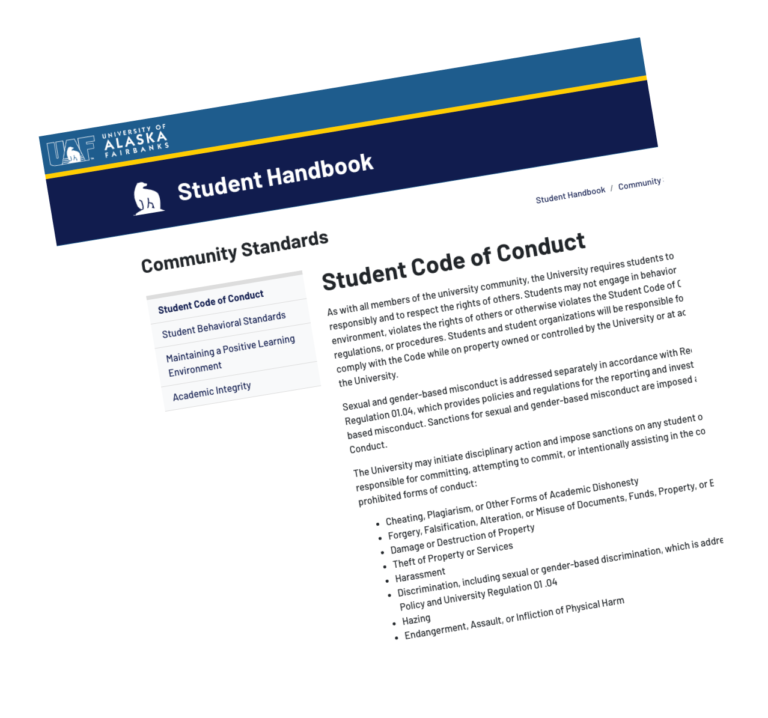
Enhancing Connection and Flexibility: Integrating Optional Synchronous Sessions into Asynchronous Online Courses
The recent years have underscored a larger shift to online learning, not solely as a response to the challenges of COVID-19 but also in recognition of a growing demand for more adaptable course schedules. This evolution towards digital platforms reflects a broader trend in educational innovation, catering to a variety of learning styles and student circumstances. At UAF, the expansion of asynchronous online courses is a testament to our commitment to addressing the diverse needs of our student body. From accommodating those managing work and family responsibilities to providing access for students in remote locations, these courses embody our adaptive approach to education. Yet, one consistent challenge of online asynchronous classes is fostering a sense of community and immediacy that mirrors the interactions found in traditional classrooms. As we strive to bridge this gap, integrating synchronous sessions into asynchronous online courses can become a crucial strategy to facilitate the sense of community that has been challenging to cultivate. Given that many of our students are not local to Fairbanks or are non-traditional students, the need to be creative in applying these practices is essential to the success of this approach.
Dr. Everett Beckwith of National University has conducted extensive research on asynchronous online courses since their emergence in higher education around the year 2000. In an article titled The Importance of Synchronous Sessions in Online Asynchronous Classes, Beckwith explains, “The increasing amount of research showed some clear and significant advantages of having some synchronous sessions between instructors and students as well as among students themselves” (Beckwith, 2020). The research Beckwith references indicates that these real-time interactions not only enhance the educational experience by allowing for immediate feedback and clarification of concepts but also contribute to building a sense of community and belonging among students. The implication is that while asynchronous courses offer the flexibility many students need, the inclusion of synchronous sessions can mitigate the isolation and lack of engagement that can occur in online learning, making these optional sessions a valuable tool for effective online education.
Through her research in developing a framework for engaging students, Heather J. Leslie of the University of San Diego explains the trifecta of student engagement consists of three interactions within a course: student-content, student-student, and student-instructor. While student-content and student-instructor interactions are less complicated in an asynchronous course, the student-student interaction may require a little more intention. Research shows that students and instructors see community as a very important element in online courses, and agree that it is much more challenging to create a sense of community in asynchronous courses compared to in-person courses (Leslie). Incorporating optional synchronous sessions into asynchronous courses can be an excellent way to intentionally create a sense of community within the course, and in turn, increase student engagement and success in the course (Leslie, 2020)
So how would we implement these strategies at UAF? Due to the makeup of our student body it is important to consider that attendance at these synchronous sessions should be voluntary, given that the course is listed as asynchronous. When offering in-person synchronous sessions in a course that includes students located outside of Fairbanks, it’s important to ensure these sessions are accessible remotely for those students, and recorded in some way, so students can still interact with the synchronous session, in an asynchronous way. Alternatively, students who would still opt for purely asynchronous interactions could be provided with similar activities that could be accomplished over a number of days under their own plan of organization. Perhaps they could communicate through online documents, a section of your course’s discussion board or some other mechanism of their own choosing.
Beyond the virtual accessibility for these sessions, the logistics for in person sessions can be challenging since an asynchronous course does not have a designated classroom. However, there are places on campus where you could host these optional synchronous sessions, such as Rasmuson Library, or The MILL (Making is Learning Lab) makerspace located in the Center for Teaching and Learning. Let’s explore some options for synchronous sessions within asynchronous courses.
Optional Synchronous Session Ideas
Peer Review Workshops
Organize synchronous peer review sessions where students share their work with each other in breakout rooms, or in independent meetings. This can be particularly useful for writing assignments, project proposals, or presentation practice. It encourages student-student interaction, offers diverse perspectives on their work, and fosters a supportive learning community.
Webinar or Guest Speaker Session
Host live webinars or invite guest speakers to present on topics relevant to the course. Incorporate Q&A sessions or use polling features to encourage active participation. This not only enriches the learning experience but also allows students to engage directly with industry experts and community partners.
Library Research Session
A session at Rasmuson Library where students can explore resources related to their coursework under the guidance of the instructor or a library staff. This could include learning how to access and utilize academic databases, archives, or special collections relevant to their projects or papers.
Showcase and Critique Sessions
A session where students present their projects or research findings to their peers and instructors. This not only provides a platform for students to practice public speaking and presentation skills but also encourages constructive feedback and discussion among students, enhancing the sense of community and collaboration, and resulting in better understanding and higher quality work.
Design and Prototype Session
Invite students for hands-on workshops where they can work on design and prototyping projects relevant to the course. The hands-on experience, coupled with the ability to collaborate with peers and receive immediate feedback from the instructor, enhances the learning process.
Community Building Session
As an asynchronous online instructor, your course is designed for students to succeed in that environment, and remembering that one of the most valuable results of these sessions is fostering a community within the classroom – these sessions don’t have to be purely academic, especially with their voluntary participation. Setting up a couple hours in the MILL for students to be creative and engage in something outside of the scope of the class can be extremely valuable for creating that sense of community.
Mid Semester Check-In
While building community within the class is important, 1 on 1 check-ins with students and instructors are a valuable tool that many instructors use throughout the semester. Whether it’s a zoom meeting or even a phone call, checking in with students on a regular basis has shown to increase engagement and quality of work.
Navigating Potential Challenges
One of the primary concerns with introducing synchronous elements is the potential conflict with the very flexibility that attracts students to asynchronous courses. To mitigate this, instructors might poll students at the beginning of the course to gauge availability and preferences for synchronous sessions, ensuring that planned times align with a majority of student schedules. You might also offer sessions at varied times and on different days to accommodate diverse schedules, increasing the likelihood that all students can participate in at least some live sessions. It is also very important to note that if a course is listed as asynchronous, all concurrent meetings have to be offered as optional.
Early communication regarding the details of optional synchronous sessions should be located in your syllabus, and how they complement the asynchronous components. A clear understanding of these synchronous sessions is an essential part of incorporating them into an asynchronous course.
An important consideration is maintaining an intentional balance between asynchronous and synchronous elements to ensure the course remains fundamentally asynchronous. Generally, a course is considered asynchronous if the core material can be accessed and engaged with at any time, and participation in live sessions is not a requirement for course completion. Synchronous sessions should therefore be supplemental, providing added value without becoming a barrier to the flexibility that defines asynchronous coursework.
The integration of optional synchronous sessions into asynchronous online courses presents a promising way for increasing student engagement, fostering a sense of belonging, and breaking down the barriers of isolation often felt in digital learning spaces. Whether through virtual peer reviews, guest speaker sessions, or hands-on workshops in spaces like the MILL, these interactions are invaluable. If you are interested in using The MILL for synchronous sessions please let us know about your idea via ecampus.uaf.edu/go/making.
References
Beckwith, E. G. (2020). The importance of synchronous sessions in online asynchronous classes. In C. M. Sistek-Chandler (Ed.), Exploring Online Learning Through Synchronous and Asynchronous Instructional Methods (pp. 33-51). IGI Global.
Leslie, H. J. (2020). The trifecta of student engagement: A framework for engaging students in online courses. In C. M. Sistek-Chandler (Ed.), Exploring Online Learning Through Synchronous and Asynchronous Instructional Methods (pp. 77-106). IGI Global.



